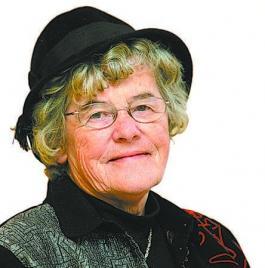
Ruby M. Cusack
New Brunswick, County Deed Registry Books, 1780-1930
I asked Mum why the two strange men who came to visit Dad were sitting on blocks of wood in the horse barn floor instead of coming into the house.
Her answer was, “Housewives are very protective of their floors as they spend a great deal of time on their hands and knees scrubbing the bare wooden floors or ones covered with battle ship linoleum. The men know better than to track up the floor with their muddy feet plus unlacing their gum rubbers and unrolling the cuffs on their overalls which held sawdust and hayseed was a real nuisance to them. So they often just talked to a relative or neighbour in the barn or the woodshed. Chairs were absent there so they sat on an overturned pail or a round block of wood. She said, the men you see smoking pipes as they arrive, never take them into the barns or woodshed due to the danger of fire.”
Gram was listening and with a chuckle announced, “A man’s home is his castle as long as he doesn’t dirty up the floor.” “To keep on good terms with the missus, he removes his work clothes and boots in the outside porch.”
On the excuse we were going up to the hay mow to play with the pups, Cliff and I were able to listen to the men’s conversation without being noticed.
It seemed an elderly widowed lady had asked the two men to check the fellows cutting lumber near the back part of her wood lot as she was concerned they might be across the line.
That puzzled us as we knew what a clothes line and a fishing line meant but why would either one of these be in her woods?
Gramp asked if they had the original deed as this property had been in the family for several generations. How could you have a deed as that meant something you had done?
We assumed Gramp was reading from this paper called a deed, “Beginning at a certain marked cedar tree standing on the bank of the North Stream and going north for 40 chains and 2 rods to the easterly corner of land granted to" - then he stumbled so we figured he couldn’t make out the writing. After a couple of minutes, he continued, “In consideration of payment of ten pounds and 12 shillings of the current money of the province of New Brunswick.”
The words were getting bigger and not understandable to us when our eavesdropping ended when we heard Mum calling us.
We tried to remember the big words we had heard so we could get some help from Mun in figuring out this weird conversation about chains, rod, lines and shillings in the woods but Mum didn’t seem interested in explaining any of this to us.
Gram commented, “Those who knowingly cross the property line and start cutting with the axe or the crosscut saw, when they spot a good stand of lumber should be banished from the county”.
I am a little older now and I know a chain means 66 feet in length, with a rod being 16.5 feet.
As for value in money, 12 pence make a shilling, 20 shillings make a pound. Back in 1800s, the pound was generally worth about $4 to $5.
Lines are the division markings between properties.
If you are seeking information on a piece of property, you can go to Service New Brunswick and search the land transactions for a fee. Or from the comfort of home you can visit the familysearch.org website and search the 792,235 images from the New Brunswick, County Deed Registry Books, 1780-1930 and the indexes for free. The collection is being published as images become available.
One example is in Volume B 1846 - 1854 Restigouche County - This indenture made 28th day of September of 1846 between Robert Ferguson, parish of Addington, County of Restigouche and Daniel Horgan of Eel River, Parish of Colborne for fifty pounds of current money of the Province of New Brunswick . . . .
Another in the Charlotte County Ledger page 177 of Volume A was recorded that Thomas Littlejohn of St. Andrews, Charlotte County, Province of Nova Scotia received fifty pounds from David Eastman of St. Andrews for land lying on Schoodick River being lot number 171 . . . Thomas Littlejohn signed with an “X”.
Time will fly as you trace the transactions of your ancestors in their buying and selling of property. Leases and mortgages often give a closer look at their financial status.
Another road to take is to start with a parcel of land and figure out how it was divided over the years and who were the owners. This sometimes lead to finding family connections as well as the neigbours who lived on bordering properties.
“Land” has a story to tell if we take the time to search for it.
|
New and Used Genealogical and Historical books of New Brunswick for sale. |
Back to Home of rubycusack dot com